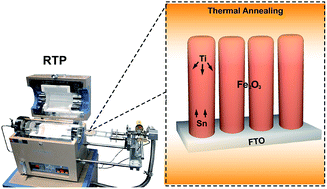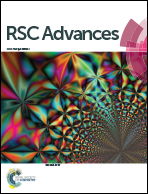The effect of thermal annealing on the interfacial properties and photoelectrochemical performance of Ti doped Fe2O3 nanowire arrays†
Abstract
Hematite (α-Fe2O3) is considered a promising material for solar water splitting but still faces the challenges of poor conductivity and slow charge transfer kinetics. This issue is normally addressed by doping along with postsynthesis thermal treatments. In order to understand how the postsynthesis thermal treatment influences doped Fe2O3, Ti doped Fe2O3 nanorod arrays were synthesized and subjected to different post annealing processes. The TiCl4 solution hydrolysis treatment for doping and the post annealing time were optimized. To understand the thermal annealing effect on the interfacial properties and photoelectrochemical performance, the structural and photoelectrochemical properties of Ti doped and undoped samples with different annealing conditions were investigated. The formation energies for Ti or Sn doping were estimated by theoretical calculation. Both our theoretical and experimental results showed that the dopant Ti was easier to incorporated into Fe2O3 than Sn and thus required less annealing time. Our results also demonstrated the significant influence of postsynthesis thermal treatment on the photoelectrochemical performance of doped Fe2O3 nanorod arrays.



 Please wait while we load your content...
Please wait while we load your content...